Gem of North Texas shines on: Veterans Plaza latest chapter in lake's long, colorful history
When the Veterans Plaza at Lake Wichita Falls is dedicated on Memorial Day it will mark the latest chapter in the history of a small lake with a long and colorful history in Wichita Falls.
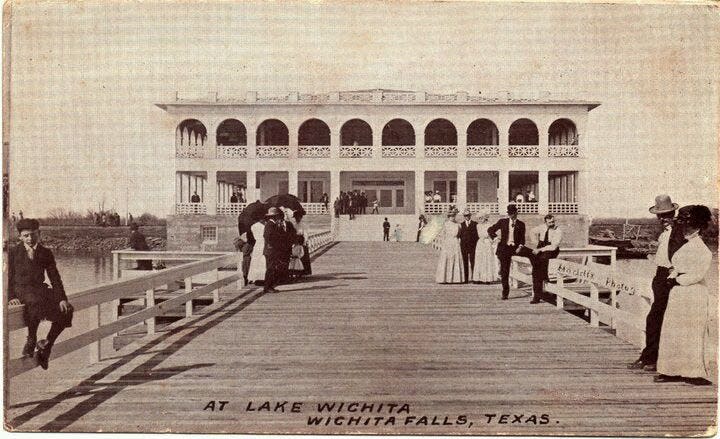
Water source for growing Wichita Falls community
As were so many things, the lake on the south edge of the city was the brainchild of early-day entrepreneur Joseph A. Kemp, who understood a growing town needed water. He and partners built a dam on Holliday Creek that formed the lake, which was completed in 1901. Despite being billed as the largest inland lake in Texas, in just a few years it became inadequate for the needs of a growing town. Kemp moved on to construct the much larger reservoir that bears his name – Lake Kemp.
Trains and trolleys full of visitors
If Lake Wichita’s time as a water source was short, it would find a second purpose as a recreational area. By spring of 1910, work had begun on a pier and pavilion. That was followed by construction of the Lakeside Hotel, a ballpark, racetrack, fair building, arcade, cabins and a fishing pier. There was a merry-go-round, a Ferris Wheel and a rollercoaster.
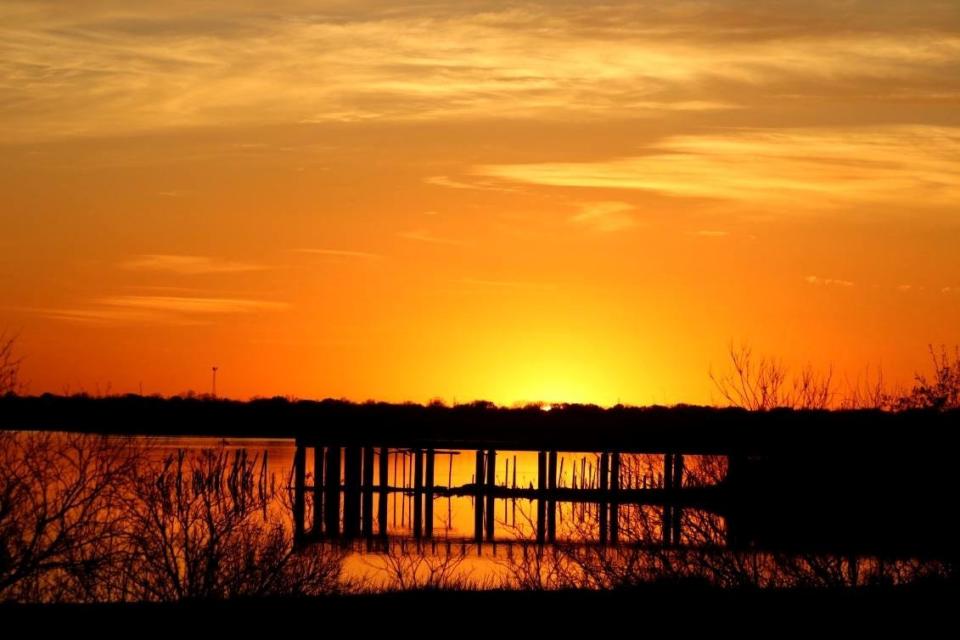
The centerpiece was the pavilion, which had a café and skating rink on the lower level and a dance hall upstairs. Gentlemen paid 50 cents to attend the dances and ladies got in for free.
It was a huge success. Crowds came by train from Fort Worth and other cities to bask in “the warm sun and cool breeze” of Lake Wichita.
Trolley cars traveled between town and the lake every 39 minutes.
In August 1910, the Texas County Judges and Commissioners Association chose the lake for its state convention, drawing hundreds of visitors. In September 1913, the social event of the year was a dance for 80 prominent couples with a grand march led by Miss Lillian McGregor and Mr. L.T. Burns.

On the Fourth of July 1914, thousands went to the lake to celebrate Independence Day. It was done “quietly and sanely, yet thoroughly and pleasantly,” reported the Wichita Daily Times.
Perhaps the newspaper felt obliged to add that description because a few years earlier on July 4, 1911, an entire fireworks display exploded on the pier. The Times reported a half dozen people suffered minor injuries in the blast and the “wild scramble that followed.” The newspaper noted it was a “brilliant but momentary display.”
Big-name performers flocked to the stage
By 1922, Billy Buzzard’s Band was a favorite performer for the Bachelors Club, which conducted dances at the Pavilion. The Chamber of Commerce sponsored carnivals on the shore. Performances by the Jaycess of “The Drunkard” had encore performances for several years.
Everybody had a good time, including Constable Bud Clark who in 1942 was fished out of the lake after he stumbled over a soft drink case and fell in.
Big names performed at the pavilion. Bob Wills and his Texas Play Boys were regulars.
When Cab Calloway performed in the spring of 1941 it was announced that a section would be reserved for white spectators. “The appearance of the famed [historical term for Black person] orchestra leader is expected to attract a capacity crowd,” the Record News reported.
Famous drummer Gene Krupa hammered away at the skins in 1951.
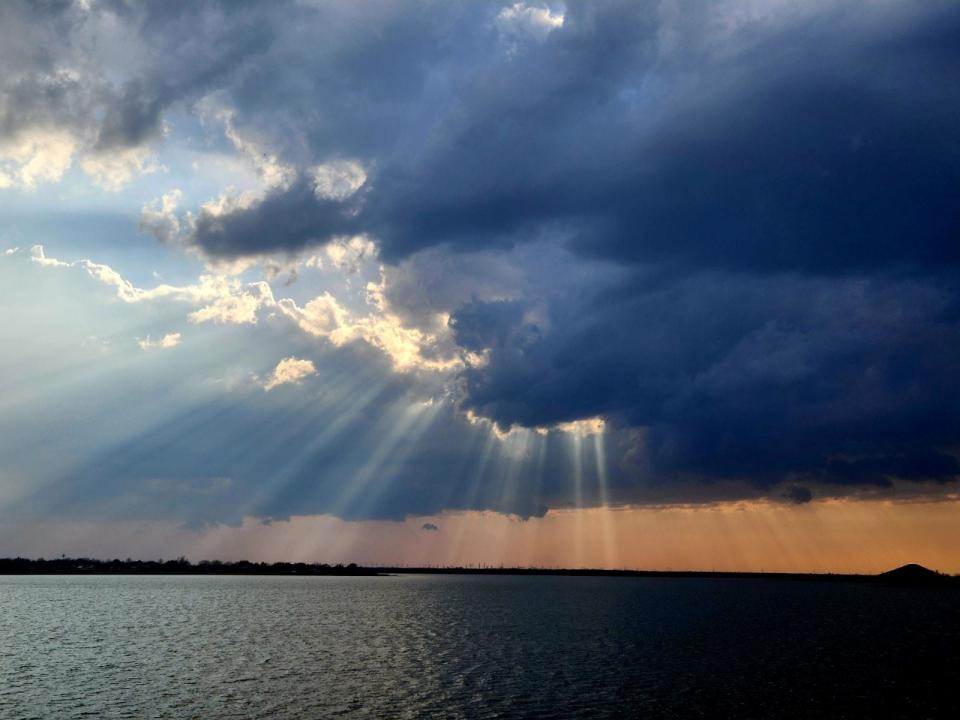
Advent of autos sent travel off the rails
But times were changing. By the middle of the century, passenger trains were rattling into the sunset. Automobiles became the preferred transportation. Family vacations became part of the national culture and places like Disneyland and Six Flags and Sea World arrived to usher smaller local attractions off the stage.
The Lakeside Hotel, with its 50 posh rooms and dining tables set for 150 guests, barely got started before it burned in 1915. Gradually, the other attractions – the arcade, the racetrack, the baseball field and the cabins -- went away.
In June 1952, the federal government auctioned off the merry-go-round, the Ferris Wheel and the other carnival rides for nonpayment of taxes.
The park area was owned by the city but leased to private operators, which resulted in prickly situations practically from the beginning. In April 1928, the county attorney and sheriff tried to close the pavilion after a raid. A district judge allowed it to stay in business so long as “certain present practices be discontinued.” What those practices were was not spelled out and are left to the imagination.
Famous pavilion was last to go
In 1941, the pavilion, which once drew the crème de la crème of Wichita Falls society, was leased to a private operator as “an amusement park or nightclub or similar activity.” It burned in late 1955.
Later, the Wichita Daily Times reported that what remained of the structure, which was “quite a spot during the heyday of the Twenties, looks a bit comical with its spindly legs going down to bare, muddy ground.” The article noted it was possible to walk around the pavilion without ever touching water.
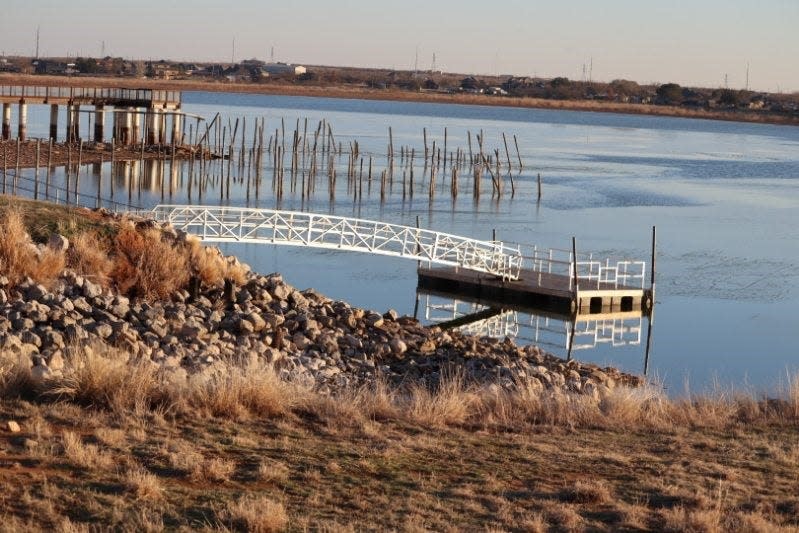
That’s because the lake had a long history of losing water. It was created from a small creek, not a major tributary. Evaporation constantly took a toll and over time it silted in. By the 1960s the city was considering bringing water to it from Lake Kemp, but that proved too complicated and expensive.
Necessary flood prevention lowered lake level
While the lake had a scarcity of water, its tributary sometimes did not.
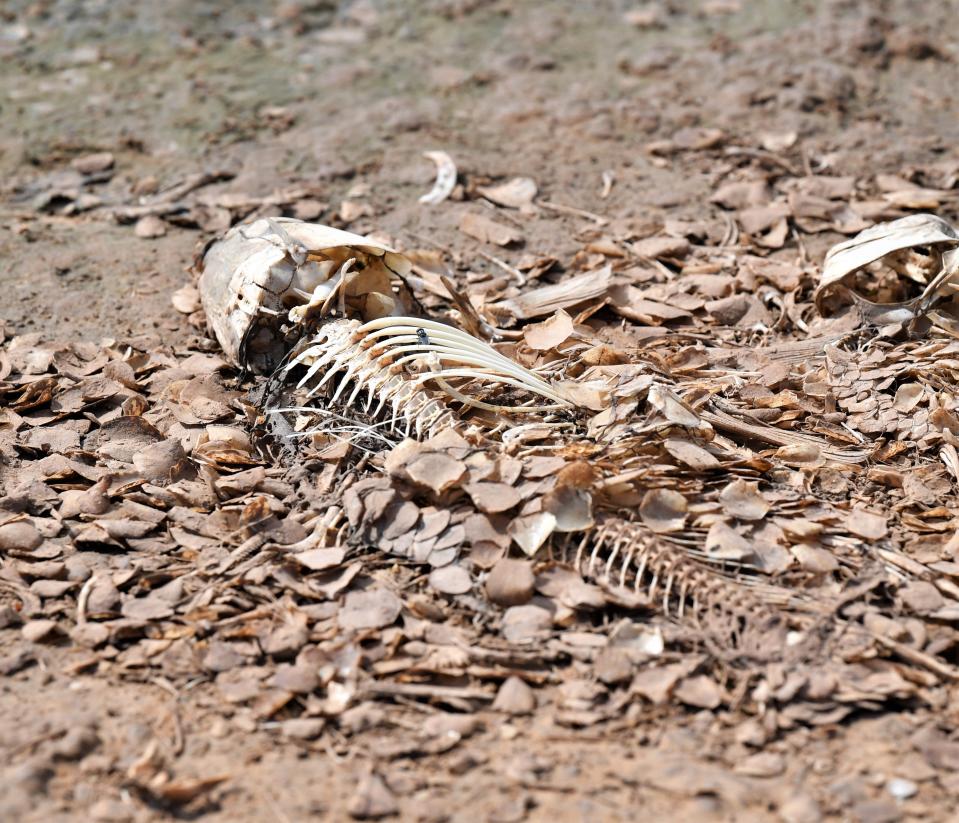
During heavy rains, Holliday Creek rose out of its banks. As early as the 1930s, city fathers saw the creek was a problem. As the city expanded, the problem became worse and by the 1980s, flooding was causing millions of dollars in damage to homes and businesses. After a particularly bad flood in 1982, Wichita Falls got federal funds to help pay for the Holliday Creek flood control project. The creek was widened and deepened and given a concrete bed. A new dam and spillway were built at the lake.
The project alleviated flooding but also lowered the water level at Lake Wichita. That hastened the decline of what had once been the premier recreation site in Wichita Falls. At one time, parts of the lake were 17 feet deep. Now the average depth is about three feet and fish are no longer stocked by the Texas Parks and Wildlife Department. Any fish in the lake now have washed in from surrounding waterways. An engineering study done in 1991 concluded the future of the lake as a recreational asset was “severely jeopardized.” It would be possible to deepen the lake by excavation, but that option would be cost-prohibitive – an estimated $75 million. The lengthy process of securing an Army Corps of Engineers 404 permit was completed in 2017.
More: Wichita Falls officials to move forward with design of three Lake Wichita projects
More: Bricks made from Lake Wichita mud may be answer to hefty dredging price tag
A place for remembrance, reflection
So, the Lake Wichita Revitalization Committee has turned its attention to things that can be done on the shore. A lot has been done in recent years, including creation of a dog park and extension of the city’s paved Circle Trail along part of the shore. A large hill of dirt dredged from Sikes Lake has become an attraction and was informally named for popular parks director Jack Murphy. The city recently earmarked $800,000 for badly needed repaving of the Lake Wichita Park parking lot. A boardwalk near the original boardwalk and pavilion has been added and a kayak launch is under construction near the main parking lot. The LWRC and city intentionally left the old posts from the original boardwalk in place to preserve the lake's history. A Texas Historical Commission marker was placed near the site in 2019.
More: Gold Star monument placed at Veterans Plaza
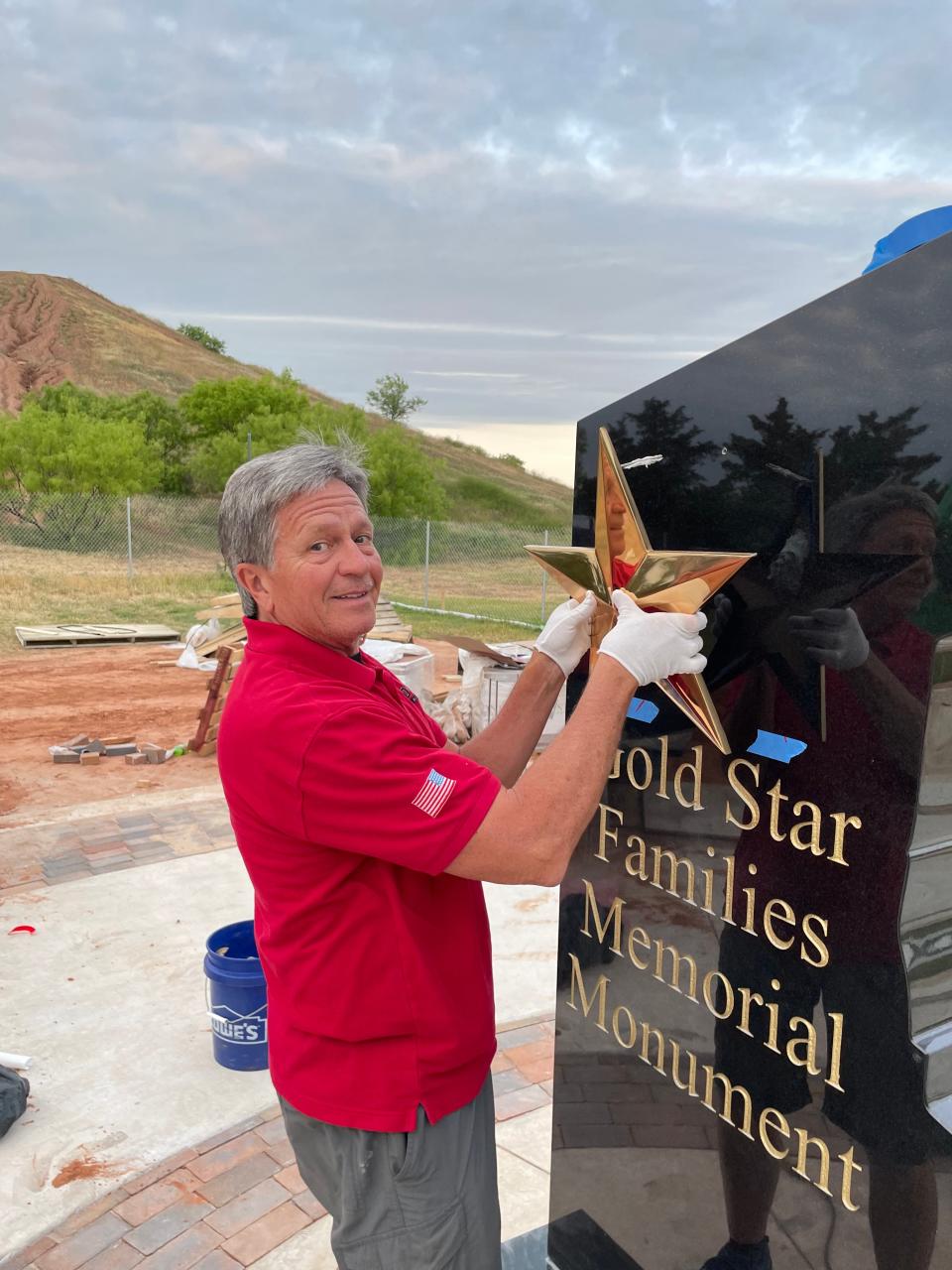
More: Lake Wichita group requests $15.4 mil in bond for improvements
More: Funding in place for boardwalk at Lake Wichita, construction could begin this winter
The lake shore has also become a place of remembering men and women who served in the military. Daughters of the American Revolution erected a Vietnam War Memorial which is within a Veterans Plaza that will be dedicated Monday. The public is invited to the ceremony at 4 p.m.
More: Local artist Ralph Stearns nears completion on spillway mural
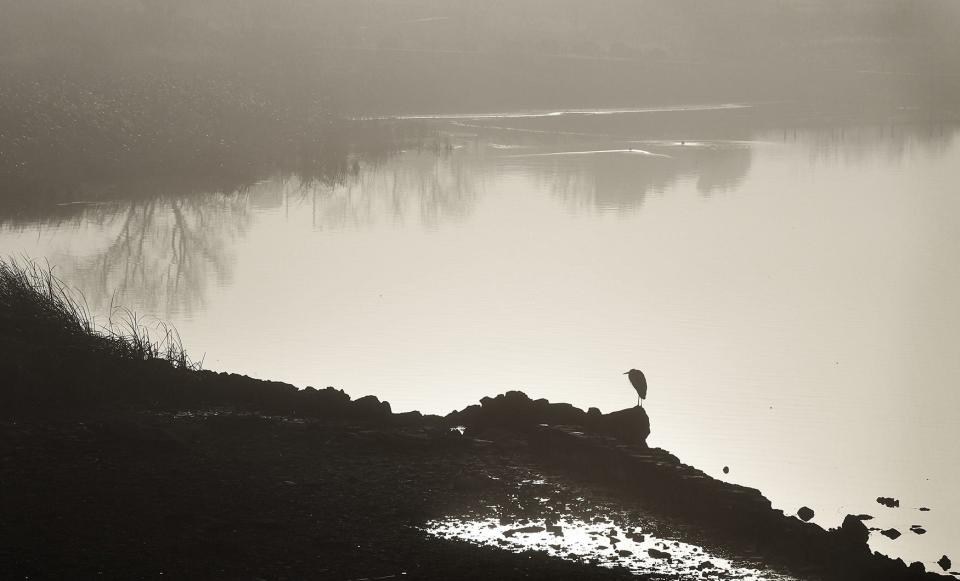
In its second century, Lake Wichita is no longer the rollicking tourist attraction of its early days, maturing instead into a place of more serene pleasures – and remembrance.
This article originally appeared on Wichita Falls Times Record News: Veterans Plaza is latest chapter in Lake Wichita's long and colorful history

